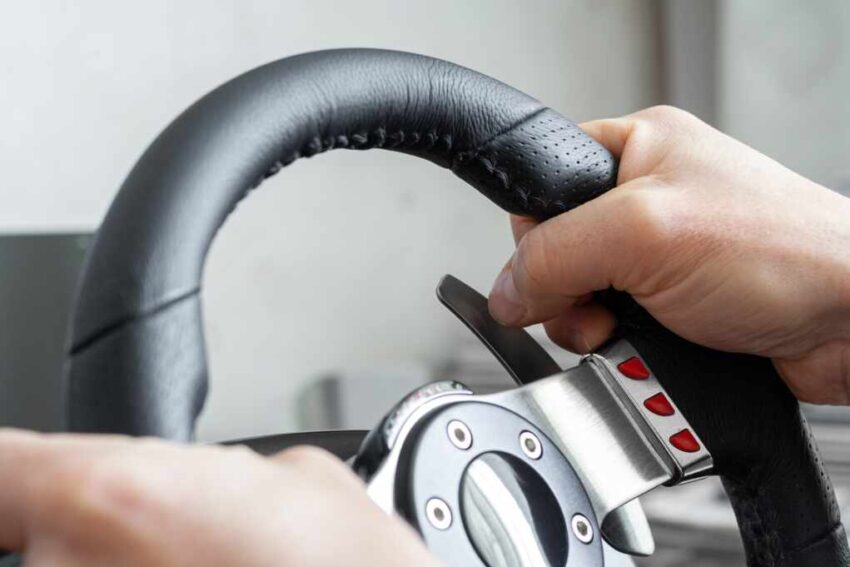A teenager slashed $1,300 from their driving education bill by skipping traditional lessons, learning instead from YouTube tutorials and a driving simulator—raising eyebrows and big questions about the future of hands-on training in a world obsessed with “digital everything.”
At a Glance
- Teen passes driving test first try after preparing exclusively with YouTube and simulation tech
- Digital learning outpaces expensive, traditional driver’s ed—saving families real money
- Experts split: simulators reduce risky behavior, but real-world experience can’t be replaced
- Regulators lag behind technology; driving schools and government face pressure to adapt
Teen Skips the Middleman: YouTube and Simulators Replace Expensive Lessons
With inflation still squeezing every last drop out of family budgets, a teen’s decision to forgo pricey driving lessons and hit the digital highway instead is sending shockwaves through the industry. This young driver, like many in the “digital native” generation, turned to free YouTube tutorials and a home driving simulator, bypassing the costly and often bureaucratic traditional instruction. Instead of sitting through hours of classroom lectures and forking over hundreds—sometimes thousands—of dollars, the teen practiced on a simulator, mastered parallel parking from YouTube, and walked into the DMV with a confidence you can’t buy in a stale classroom. For families tired of being nickel-and-dimed by government-mandated training regimens, this story hits a nerve. If a $1,300 “education” can be replaced by a gaming rig and a few online videos, what exactly are we paying for? And why are regulators so slow to update rules to match the reality of how kids actually learn today?
Teen saves $1.3K on driving lessons by watching YouTube tips — and passes first time https://t.co/4SdkOX4Cq3 pic.twitter.com/IUavJWwt2Y
— New York Post (@nypost) July 25, 2025
Driving simulators have come a long way since the clunky mechanical contraptions of the 1960s. Now, they offer high-fidelity graphics and realistic steering-wheel feedback at a fraction of the price of a single lesson. The COVID-19 lockdowns accelerated the shift to remote learning, but the government—in true fashion—hasn’t caught up. While research shows simulators can help reduce risky behaviors for new drivers, licensing rules still cling to the old classroom-and-road formula, with simulators and digital tutorials mostly relegated to the role of “supplement” rather than serious curriculum. The result? A generation of teens is taking matters into their own hands, and the institutions that profit off outdated models are getting nervous.
Experts and Industry: Split Between Innovation and Tradition
Research confirms what any common-sense American already suspects: you can teach yourself a lot online if you have initiative and the right tools. Academic studies show simulator-trained novices get into fewer risky situations, though some skills—like pedal finesse—might not improve as much without real-world repetition. Industry experts and insurance analysts are calling for a hybrid approach: combine simulation tech with supervised on-road practice, and you get the best of both worlds. But there’s a catch. Regulators, ever wary of change, are slow to recognize simulator training in licensing requirements. As a result, even the most advanced tech is dismissed as “non-essential,” while families are pushed toward expensive, one-size-fits-all programs that haven’t changed since before the internet was a thing.
Driving schools, feeling the squeeze, argue that nothing replaces real-world driving. They’re not wrong—no simulator can replicate the unpredictable chaos of rush-hour traffic or bad weather. But as families continue to get gouged by inflated prices for basic education, it’s clear the market is ripe for disruption. Simulator companies are rolling out new products with better realism and data analytics, chasing a huge market of parents who’d rather invest in a home setup than write checks to a brick-and-mortar school that treats every student the same, regardless of their needs or abilities.
Regulators Lag Behind, Families and Teens Push for Change
The refusal of licensing agencies and government bodies to accept simulator hours or YouTube training as legitimate is a classic case of bureaucratic inertia. Regulators set standards, but those standards lag far behind the technology and common-sense solutions that families are already using. Experts agree that a hybrid model—combining simulation, online tutorials, and supervised real-world practice—could democratize driver education, making it safer and more affordable for everyone. Yet, no surprise here, regulatory adoption is slow, and the entrenched interests of the driving school lobby aren’t eager to lose their monopoly on “approved” training. This story is a microcosm of the broader struggle between families trying to save money and do what’s best for their kids, and a system determined to keep things exactly as they’ve always been, no matter how much sense it doesn’t make in 2025.
With teens now proving they can pass their driving tests—and save thousands—by taking charge of their own education, the writing’s on the wall. The only question is how long the government and its pet industries will keep pretending nothing’s changed. For now, Americans who value personal responsibility, thrift, and innovation are quietly cheering every time a kid beats the system with grit, brains, and a YouTube playlist.
Click this link for the original source of this article.
Author: Editor
This content is courtesy of, and owned and copyrighted by, https://conservativeamericatoday.com and its author. This content is made available by use of the public RSS feed offered by the host site and is used for educational purposes only. If you are the author or represent the host site and would like this content removed now and in the future, please contact USSANews.com using the email address in the Contact page found in the website menu.








